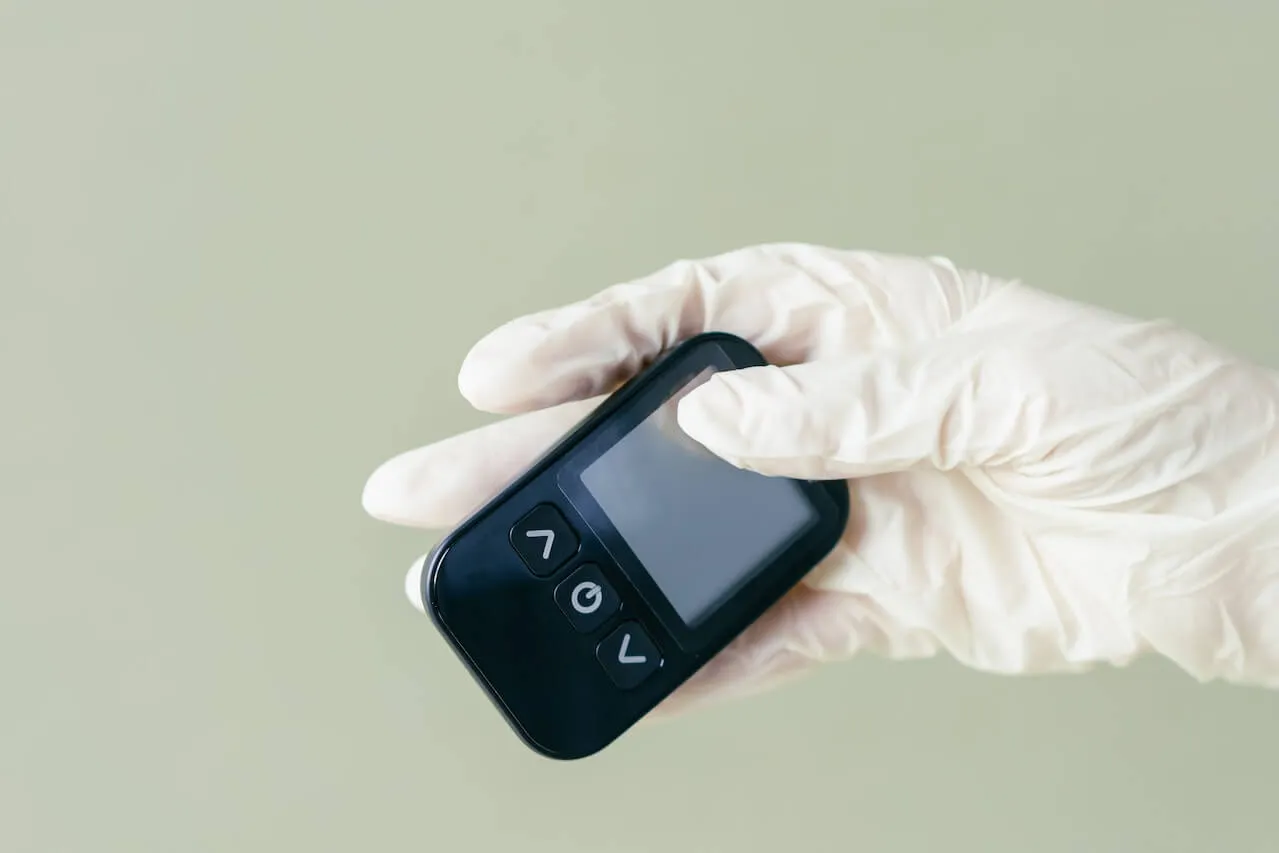If you were asked to give your number-one health goal, what would it be? Lose 20 pounds. Climb to the top of Mt. Everest. Stay alive in a zombie apocalypse. The answer probably wouldn’t be to reverse insulin resistance.
It may not be top-of-mind sexy, but insulin resistance is a real condition that impacts millions of Americans and hundreds of millions worldwide. In order to burn enough stored fat to lose 20 pounds and keep it off, build the endurance to withstand the rigor of mountain climbing, slay brain-eating monsters, and more, your body’s cells need to create energy. A piece of the energy creation and storage system in the body depends on insulin.
Your body produces insulin to help keep your blood sugar at stable levels. Eating or drinking, exercising, reacting to stress, and even the process of waking up in the morning trigger the beta cells in the pancreas to release insulin to keep blood glucose in check.
When your body doesn’t respond to insulin the way it should, your cells can’t receive the glucose from your blood that they need to produce energy. This is known as insulin resistance.
Key Takeaways
- When cells become insulin resistant, glucose stays in the bloodstream; this can lead to high blood sugar.
- Insulin resistance can result from lifestyle choices, specific disorders, and steroid use.
- Reverse insulin resistance through exercise, losing belly fat, and eating in a way that supports healthy metabolic function.
{{mid-cta}}
What is Insulin Resistance?
When the pancreas needs to work harder to produce enough insulin to regulate blood sugar, this is called insulin resistance. The beta cells in the pancreas will eventually either burn out completely or be unable to compensate for the increased demand. Insulin resistance is a predictor of future type 2 diabetes. However, insulin resistance is readily reversible with fat loss and a diet and exercise plan that focuses on minimizing spikes in blood glucose.
Increased caloric intake and decreased physical activity resulting in the gain of metabolically active adipose tissue is the primary cause of insulin resistance. Although weight gain can lead to insulin resistance, it isn’t the only factor. There are complex metabolic pathways involving the liver, white adipocytes (fat cells), skeletal muscle, and metabolites produced by these cells that result in insulin resistance.1
What are Symptoms of Insulin Resistance
Over time, as insulin resistance worsens, extra insulin won’t make up for your cells’ weak response. Your blood sugar will remain chronically high, a condition known as hyperglycemia, and can leave you vulnerable to complications, such as:
- High blood pressure (hypertension)
- High fasting blood glucose
- Larger waist circumference (35+ inches for women, 40+ for men)
- Low HDL cholesterol (below 50 mg/dL for women, 40 mg/dL for men)
- High triglycerides (above 150 mg/dL)
Causes and Risk Factors of Insulin Resistance
Insulin resistance can result from lifestyle choices, specific disorders, and steroid use, including:
Chronic stress
Chronic oxidative stress results in weakened insulin response. High glucose can lead to increased production of reactive oxygen species. This can make it harder for your cells to convert the glucose stored in your muscles and fat tissue into energy. You don’t want this for aesthetic reasons, but worse, over time, this can lead to B-cell failure in the pancreas, glucose intolerance, and diabetes.2
Being overweight or obese
The relationship between obesity and insulin resistance is seen across all ethnic groups and a wide range of body weights, as this research review notes.3 If you carry excess fat around your waistline compared to your bum, then you could be at higher risk for insulin resistance, type 2 diabetes, and heart disease.3
Not enough movement
A sedentary lifestyle with little physical activity aside from walking from your car to a building and back is associated with insulin resistance, increased blood pressure, high HDL cholesterol levels, and impaired function of the walls of blood vessels.4
Genetics
Your ethnicity could make you more prone to insulin resistance. One study suggests that south Asian and Aboriginal people display a greater increase in insulin resistance than some other groups.5 Blacks and Hispanics can also be prone to increased insulin resistance.6 Those who have have a family history of diabetes could be more prone to developing insulin resistance.
Steroids
Sex steroids and pharmaceutical steroids can impair normal insulin sensitivity.7,8
Smoking
Nicotine can induce insulin resistance; this applies to smokers and those exposed consistently to secondhand smoke. One study found that cigarette smokers were less sensitive to insulin compared to the control group, but their sensitivity increased one to two weeks after they quit smoking.9

Complications of Insulin Resistance
Insulin resistance can affect the body in numerous ways. High blood glucose and insulin levels can cause the following health conditions:
- Coronary artery disease
- Polycystic ovary syndrome (PCOS)
- Metabolic syndrome
- Prediabetes
- Type 2 diabetes
- Fatty liver disease
One of the most severe complications of insulin resistance is metabolic syndrome. Metabolic syndrome is a chronic condition that groups together high cholesterol, high blood pressure, high glucose levels, and excessive body fat. This condition involves many different body systems and can lead to heart disease, diabetes, and stroke. It is estimated that in the U.S., 1 out of every 3 adults over the age of 18 has metabolic syndrome or prediabetes.10
Insulin Resistance Diagnosis Treatment
Currently, there are no screening tests for insulin resistance. Your healthcare provider will likely use a blood glucose test of hemoglobin A1C test to determine if you are at risk or currently living with prediabetes or type 2 diabetes.
In the early stages of insulin resistance, you may not have any abnormal blood glucose levels and appear to be normal. The combination of symptoms, blood tests, and a physical exam will aid your healthcare provider in determining if you are showing signs of insulin resistance.
Can Insulin Resistance Be Reversed?
A resounding yes—insulin resistance can be reversed.
A research review suggests, insulin resistance can simply be the result of extra energy in the cells over many years.11 To reverse the condition, burn through the stored energy in the cells. Then, embrace a lifestyle that’s supportive of preventing insulin resistance.
How to Reverse Insulin Resistance Through Diet
An insulin resistance diet emphasizes nutritious real foods, lowering the number of refined carbs and processed foods you consume. Prioritize low-glycemic foods in appropriate portions. Low-glycemic nutrition plans can help increase body fat loss and reduce cardiovascular disease risk.12
10 Natural Ways to Reverse Insulin Resistance
Finding out that you have insulin resistance may be scary, but there are natural ways that you can reverse this condition. Below are some of the top lifestyle changes to implement in order to improve insulin sensitivity.
Body weight loss
Losing excess body weight is one of the top ways to reverse insulin resistance. However, individuals at a healthy weight can still be impacted by insulin resistance. In one study, up to 50% of people with insulin resistance were not overweight.13
Training and exercise
Both cardio and strength training are important in a well-rounded exercise program. Some studies suggest that integrating both activities into your weekly routine provides greater benefits than doing either one alone.14
If you do not have access to a gym or home exercise equipment, walking can also have a dramatic impact on insulin resistance. One study looked at the benefits of a 12-week program where obese women walked three days a week. The walkers lost a significant amount of body fat and had improved fasting glucose levels.15
Reduce stress
Stress hormones, cortisol and adrenaline, can directly impact blood sugar levels as they trigger the release of glycogen in a flight-or-fight scenario. Chronic stress continually activates this system and may contribute to insulin resistance.16 To reduce stress, integrate meditation, journaling, yoga, or a self-care ritual into your schedule.
Eat more soluble fiber
Fiber can also help lower insulin levels. There are likely multiple mechanisms at play, but one reason fiber can help with blood sugar is that, unlike other carbohydrates that can raise blood sugar, fiber is not broken down and absorbed into the bloodstream in the same way. Most fiber-rich foods are low on the glycemic index, so they don't cause the same spikes in blood sugar.
Add more fruits and vegetables
Include polyphenol-, epicatechin-, and anthocyanin-containing foods in your diet. A study shows beneficial results on insulin resistance from the antioxidants and micronutrients in fruits, vegetables, and spices. All those vibrant colors and fragrant aromas are nature’s way of attracting you to eat what’s good for you.

You can find polyphenols in numerous fruits and vegetables, including:
- Berries
- Apricots
- Oranges
- Apples
- Cherries
- Spinach
- Onions
- Broccoli
- Carrots
- Asparagus
- Nuts and seeds such as almonds, walnuts, flaxseed
- Spices such as saffron, cloves, star anise, cumin, and cinnamon
Epicatechin concentrations are high in:
- Apples
- Blackberries
- Broad beans
- Cherries
- Black grapes
- Pears
- Raspberries
- Dark chocolate (we saved the best for last. Are you dancing too?)
Foods rich in anthocyanins include:
- Eggplant
- Black currants
- Blackberries
- Blueberries
- Purple cabbage
- Cranberries
- Cherries
Cut back on carbohydrates
To improve insulin sensitivity, you can cut back on your carbohydrate intake. Focus on decreasing simple carbs, which break down quickly and lead to rapid spikes in blood sugar. The biggest source of simple carbs is sugar, so look to replace foods with high sugar content first.
Limit sugar
A study that reviewed the diets of 350 children showed that excessive glucose, fructose (sugar in fruit and honey), and sucrose (cane sugar) can lead to blood sugar imbalance and insulin resistance.17
Cut back on saturated and trans fats
Another study links insulin resistance to chronic inflammation and the release of saturated fatty acids into the blood from the storage of excess saturated fats.18 To be clear, the main source of saturated fats in modern diets: processed foods.19
Trans fatty acids are man-made and produced when hydrogen is added to vegetable oils to create solids. You can find these fats in vegetable shortening, fast food, and non-dairy creamers.
Introduce herbs and spices
Researchers have ongoing studies to explore the benefits of herbs and spices in relation to insulin sensitivity.3 Some of the most promising results come from cinnamon, fenugreek, ginger, pepper, saffron, and turmeric. However, more research is needed in this area.
Include dietary supplements
Berberine, a compound found in the stems and roots of certain plants, has been found to reduce A1c, fasting glucose, post-meal glucose, and triglyceride levels similar to drugs like metformin.20 More recent research from 2019 has also confirmed these finding.21
Low magnesium levels can also lead to insulin resistance, so supplementation may help improve insulin sensitivity. However, before adding supplements to your routine, you should consult your healthcare provider.
Topics discussed in this article:
References
- Gancheva, S., Jelenik, T., Álvarez-Hernández, E., & Roden, M. (2018). Interorgan Metabolic Crosstalk in Human Insulin Resistance. Physiological Reviews, 98(3), 1371–1415. https://doi.org/10.1152/physrev.00015.2017
- Berdichevsky, A., Guarente, L., & Bose, A. (2010). Acute oxidative stress can reverse insulin resistance by inactivation of cytoplasmic JNK. Journal of Biological Chemistry, 285(28), 21581–21589. https://doi.org/10.1074/jbc.m109.093633
- Kahn, B. B., & Flier, J. S. (2000). Obesity and insulin resistance. Journal of Clinical Investigation, 106(4), 473–481. https://doi.org/10.1172/jci10842
- Hamburg, N. M., McMackin, C. J., Huang, A. L., Shenouda, S. M., Widlansky, M. E., Schulz, E., Gokce, N., Ruderman, N. B., Keaney, J. F., & Vita, J. A. (2007). Physical inactivity rapidly induces insulin resistance and microvascular dysfunction in healthy volunteers. Arteriosclerosis, Thrombosis, and Vascular Biology, 27(12), 2650–2656. https://doi.org/10.1161/atvbaha.107.153288
- Mente, A., Razak, F., Blankenberg, S., Vuksan, V., Davis, A. D., Miller, R., Teo, K., Gerstein, H. C., Sharma, A. M., Yusuf, S., Anand, S. S., Evaluation, R., & Investigators, S. I. a. P. (2010). Ethnic variation in adiponectin and leptin levels and their association with adiposity and insulin resistance. Diabetes Care, 33(7), 1629–1634. https://doi.org/10.2337/dc09-1392
- Haffner, S. M., D’Agostino, R. B., Saad, M. F., Rewers, M., Mykkänen, L., Selby, J. V., Howard, G., Savage, P. J., Hamman, R. F., Wegenknecht, L. E., & Bergman, R. N. (1996). Increased insulin resistance and insulin secretion in nondiabetic African-Americans and Hispanics compared with Non-Hispanic Whites: the Insulin Resistance Atherosclerosis Study. Diabetes, 45(6), 742–748. https://doi.org/10.2337/diab.45.6.742
- Livingstone, C., & Collison, M. (2002). Sex steroids and insulin resistance. Clinical Science, 102(2), 151–166. https://doi.org/10.1042/cs1020151
- Shen, Y., Roh, H. C., Kumari, M., & Rosen, E. D. (2017). Adipocyte glucocorticoid receptor is important in lipolysis and insulin resistance due to exogenous steroids, but not insulin resistance caused by high fat feeding. Molecular Metabolism, 6(10), 1150–1160. https://doi.org/10.1016/j.molmet.2017.06.013
- Bergman, B. C., Perreault, L., Hunerdosse, D. M., Kerege, A. A., Playdon, M. C., Samek, A. M., & Eckel, R. H. (2012). Novel and reversible mechanisms of Smoking-Induced insulin resistance in humans. Diabetes, 61(12), 3156–3166. https://doi.org/10.2337/db12-0418
- Moore, J. X., Chaudhary, N. S., & Akinyemiju, T. (2017). Metabolic Syndrome Prevalence by Race/Ethnicity and Sex in the United States, National Health and Nutrition Examination Survey, 1988–2012. Preventing Chronic Disease, 14. https://doi.org/10.5888/pcd14.160287
- Freeman AM, Pennings N. Insulin Resistance. [Updated 2022 Sep 20]. In: StatPearls [Internet]. Treasure Island (FL): StatPearls Publishing; 2023 Jan-. Available from: https://www.ncbi.nlm.nih.gov/books/NBK507839/
- McMillan-Price, J., Petocz, P., Atkinson, F., O’Neill, K. I., Samman, S., Steinbeck, K., Caterson, I., & Brand-Miller, J. (2006). Comparison of 4 diets of varying glycemic load on weight loss and cardiovascular risk reduction in overweight and obese young adults. Archives of Internal Medicine, 166(14), 1466. https://doi.org/10.1001/archinte.166.14.1466
- Elrayess, M. A., Rizk, N. M., Fadel, A. S., & Kerkadi, A. (2020). Prevalence and Predictors of Insulin Resistance in Non-Obese Healthy Young Females in Qatar. International journal of environmental research and public health, 17(14), 5088. https://doi.org/10.3390/ijerph17145088
- Bird, S. R., & Hawley, J. A. (2017). Update on the effects of physical activity on insulin sensitivity in humans. BMJ open sport & exercise medicine, 2(1), e000143. https://doi.org/10.1136/bmjsem-2016-000143
- Hong, H., Jeong, J., Kong, J., Lee, S., Yang, S., Ha, C., & Kang, H. (2014). Effect of walking exercise on abdominal fat, insulin resistance and serum cytokines in obese women. Journal of Exercise Nutrition & Biochemistry, 18(3), 277–285. https://doi.org/10.5717/jenb.2014.18.3.277
- Yan, Y., Xiao, H., Wang, S., Zhao, J., He, Y., Wang, W., & Dong, J. (2016). Investigation of the relationship between chronic stress and insulin resistance in a Chinese population. Journal of Epidemiology, 26(7), 355–360. https://doi.org/10.2188/jea.je20150183
- Kostecka M. (2014). Eating habits of preschool children and the risk of obesity, insulin resistance and metabolic syndrome in adults. Pakistan journal of medical sciences, 30(6), 1299–1303. https://doi.org/10.12669/pjms.306.5792
- Funaki, M. (2009). Saturated fatty acids and insulin resistance. The Journal of Medical Investigation, 56(3,4), 88–92. https://doi.org/10.2152/jmi.56.88
- Forouhi, N. G., Krauss, R. M., Taubes, G., & Willett, W. C. (2018). Dietary fat and cardiometabolic health: evidence, controversies, and consensus for guidance. BMJ, k2139. https://doi.org/10.1136/bmj.k2139
- Yin, J., Huang, X., & Ye, J. (2008). Efficacy of berberine in patients with type 2 diabetes mellitus. Metabolism-clinical and Experimental, 57(5), 712–717. https://doi.org/10.1016/j.metabol.2008.01.013
- Cao, C., & Su, M. (2019). Effects of berberine on glucose-lipid metabolism, inflammatory factors and insulin resistance in patients with metabolic syndrome. Experimental and therapeutic medicine, 17(4), 3009–3014. https://doi.org/10.3892/etm.2019.7295




.svg)









.svg)
.svg)
.svg)
.svg)
.svg)
.svg)
.svg)
